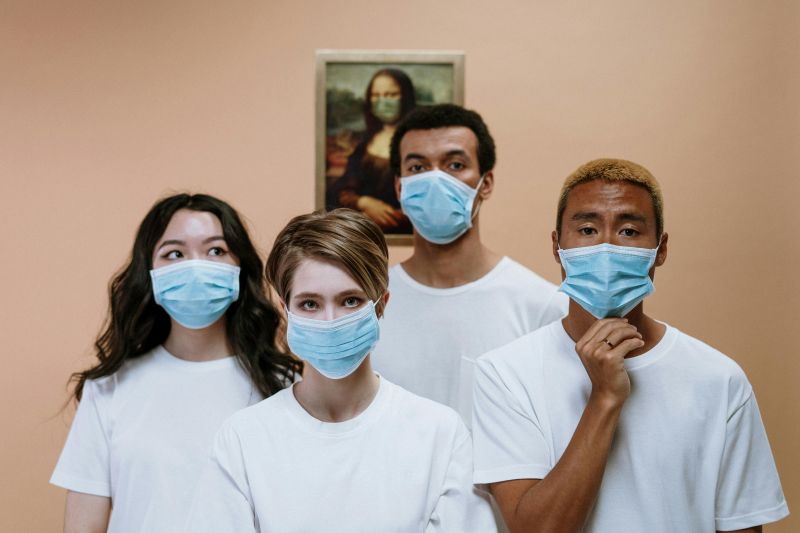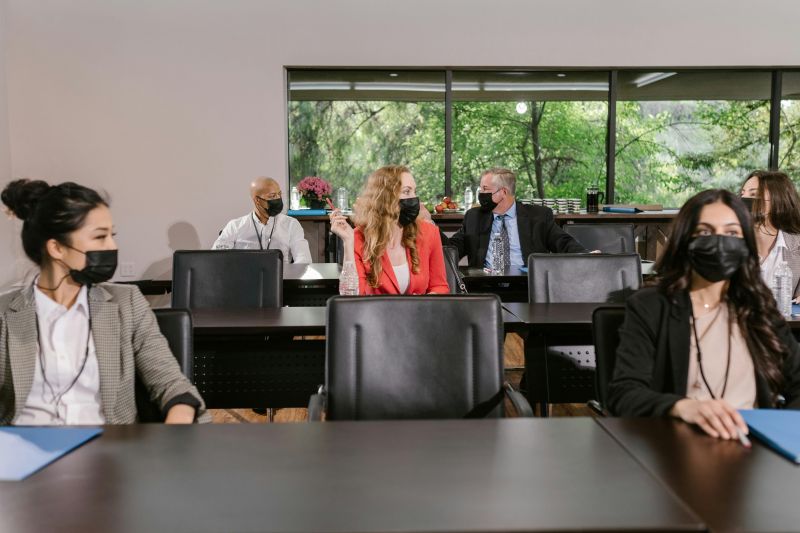Let’s be real for a second—how often do we think about safety at work until something goes wrong? Probably not much. Most people are focused on getting through the day, meeting deadlines, and maybe grabbing lunch before the cafeteria closes. But here’s the thing: a safety and health program should be more than just posters on the wall or rules in a dusty manual.
Whether someone is working on a construction site, in an office, or at a school, the need for health and safety never really changes. It’s all about keeping people safe, healthy, and able to return home each day. Think of it like seatbelts—no one really notices them until the moment they’re needed most.

A Safety And Health Program Should Be A Daily Practice, Not A One-Time Task
When someone asks what a safety and health program should include, they might expect a long list of rules or a government policy. But at its heart, it’s about a routine—something baked into everyday work life. It’s not a checkbox; it’s a habit.
For example, imagine a small bakery in Quezon City. The ovens are hot, the floor gets slippery, and knives are sharp. Now, without any safety training or equipment checks, it’s only a matter of time before someone gets hurt. That’s why a safety and health program should be OSHA-aligned, even in smaller workplaces. It’s not just for factories or big construction sites.
According to welliya.com, occupational safety covers everything from preventing slips and falls to dealing with chemical exposure. And while it might sound like overkill for some places, no job is too safe for a smart plan.
The safety health program DOLE (from the Department of Labor and Employment in the Philippines) provides guidelines that are surprisingly easy to follow. These rules are built to protect people, not burden them. Whether it’s monthly fire drills, PPE training, or even a suggestion box for health concerns, small things really do add up.
Why A Safety And Health Program Should Be Everyone’s Responsibility
It’s easy to point fingers when something goes wrong. “Why didn’t the supervisor catch that?” “The HR team should have said something!” But honestly, safety isn’t just a management issue—it’s a people issue.
Everyone from the janitor to the CEO plays a part. That’s what makes a strong program thrive. When people are trained to spot hazards, speak up without fear, and support one another, the whole company benefits. It becomes a shared culture.
Take for instance safety and health program examples from schools. Teachers guide students during drills, janitors check exits, and principals review evacuation maps. Even kids take part—lining up quietly, holding hands, and listening to instructions. That’s real safety in action.
For adults wondering how to get into health and safety, it’s not always about earning a formal degree. Sometimes, it starts with a single first-aid course, shadowing a safety officer, or joining a committee. Learning on the job with care and purpose creates stronger, more aware teams.
What A Safety And Health Program Should Include To Truly Work
It’s not enough to throw together a policy and hope it sticks. A real plan needs heart, structure, and commitment. Think of it like building a home. If the foundation is weak, cracks show up fast.
So, what goes into a good one? Here’s a quick, friendly breakdown using safety and health program management basics:
- Clear Policies: What’s allowed and what’s not? These rules must be easy to understand and available in multiple languages if needed.
- Training and Education: From orientation to refreshers, everyone needs to know the basics—fire exits, PPE use, emergency contacts, etc.
- Regular Inspections: This isn’t about catching people out—it’s about spotting issues before they become real problems.
- Incident Reporting: People need a way to speak up when something happens. And they need to know it won’t lead to trouble or punishment.
- Feedback Loops: Employees should be heard. Maybe someone has a great idea for safer storage or faster evacuation.
These pillars don’t require fancy tech. Even a printed health and safety program PDF pinned on a bulletin board can start real change.

When A Safety And Health Program Should Be Updated Or Reviewed
One of the biggest mistakes companies make? Treating their program like an old handbook gathering dust. But times change. Tools evolve. Risks shift. That’s why these programs can’t stay stuck in 2010.
Let’s say a company introduces new chemicals into its cleaning supplies. Suddenly, what used to be “safe” might now be harmful if handled the same way. So, updates are necessary—and not just yearly. Every time something big changes, the safety plan should change too.
A great tip from a safety and health program should be Quizlet flashcards is the “PLAN-DO-CHECK-ACT” cycle. It’s simple: plan the safety measure, do it, check if it’s working, then act based on results. It’s not high-tech. Just thoughtful and steady.
Real-Life Examples That Show How Important Safety Programs Are
Some of the best lessons come from real stories. Like the factory worker in Cebu who slipped on an oily floor and broke his leg. Turns out, no one had reported the spill. No signs, no warning, no training on hazard reporting. That one injury led to months of pain and lost wages.
Now, take a safety and health program sample from a clothing manufacturer in Davao. They started a weekly safety huddle—just 10 minutes on Mondays. Employees were invited to bring up any safety concerns. Over time, accidents dropped by nearly half.
It shows the power of small, human steps. When safety becomes part of the workplace culture, people feel more cared for—and they act with more care.
FAQ’s
- What is the main purpose of a safety and health program?
The main goal is to prevent injuries and illnesses at work. These programs help identify risks, train workers, and create a safe space where people can do their jobs without fear. - Should small businesses also have safety programs?
Yes. Even a small shop or office has risks—slips, poor air, fire hazards. A safety program helps protect workers and business owners alike. - How can someone learn about health and safety if they’re new?
Many start with basic training. Some use resources like Quizlet flashcards, take online classes, or talk to experienced coworkers. It doesn’t need to be complicated. - Are health and safety programs useful in schools?
Definitely. Health and safety at school protect students, staff, and visitors. Fire drills, first-aid kits, and emergency contacts are all part of it. - Can a company use safety program templates or samples?
Yes. There are safety and health program examples and PDFs online that offer a good starting point. Just make sure it fits your workplace needs.

Final Thoughts: Why A Safety And Health Program Should Be A Priority
At the end of the day, no one wants to think of accidents, injuries, or illness. But ignoring the idea won’t stop them from happening. Whether someone works with machines or schoolbooks, a safety and health program should always be in place.
It doesn’t need to be expensive. It just needs to be thoughtful, honest, and consistent. The truth is, when people feel safe, they do better. They focus more. They care more. And that’s a win for everyone.
If there’s one thing readers take away, it’s this: safety isn’t a luxury. It’s a basic need—and one that starts with a simple plan and the right mindset.

